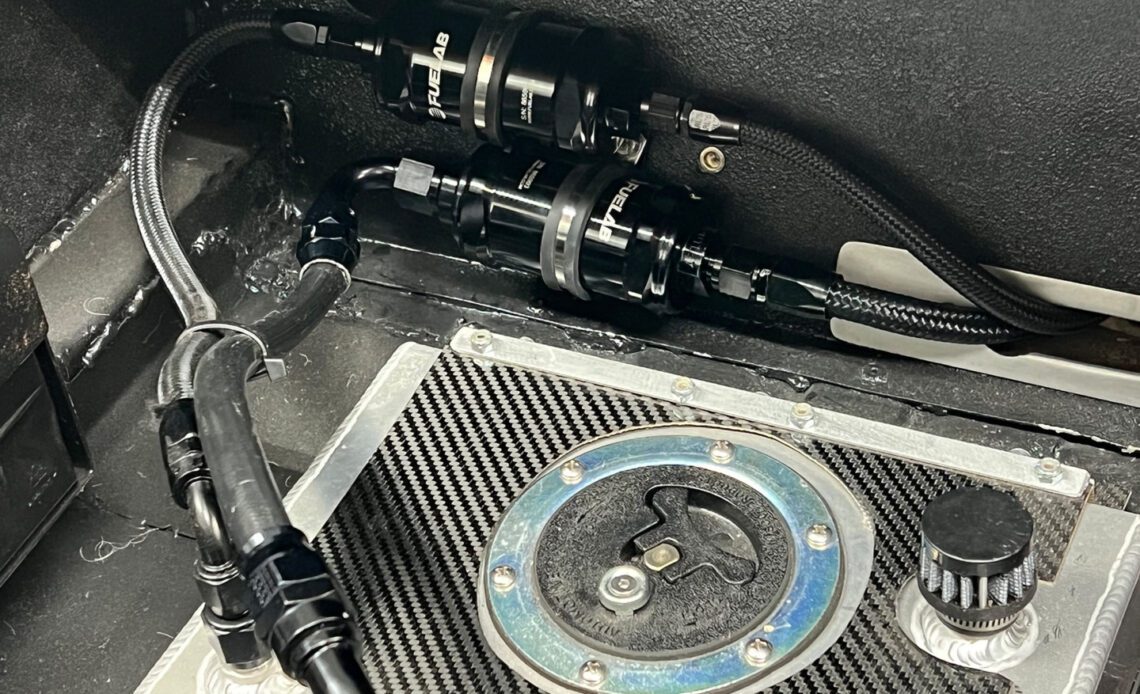Fuel filters for high-performance or all-out racing have a greater duty than many consider. We’ve seen scores of racers using a strainer-style filter within a funnel at the track and calling that “good enough.” Today’s fuel pumps, electronic injectors, carburetors, sensors, and more continue to tighten their tolerances to achieve a better fuel feed to meet higher horsepower demands, and fuel filters need to step up their game to protect these components.
Flow Criteria for Filters
The overall flow of a fuel system is only as good as the combination of components and how they either feed or circulate your fuel supply. We outfitted the Project Rover Camaro with a pair of Fuelab in-line filters for our E85-fueled, electronic fuel injection system. Brian Paitz, President at Fuelab, provided some insight into the proper filtration of a racing or extreme performance fuel system.
“The one thing that I can’t stress enough when you’re setting up a fuel system is that you look at it as an entire system,” Paitz begins. “It goes beyond just a pump, it goes beyond the regulator — it also has a lot to do with your filters.”
Filter Sizing and Location
The success of feeding your engine for its peak fuel demands will depend greatly on two critical locations in your filtration: filtering the fuel before and after the fuel pump is the most effective layout. These two filtering points ensure your fuel system is optimized for flow — yet protected.
Fuelab offers a variety of filter choices in paper/cellulose, fiberglass, and stainless steel mesh filter media that best apply to your filter size and fuel type. While in their shop, they showed two scored fuel pump plates alongside originals that demonstrated the result of not using proper filters before and after your fuel pump.
Fundamentally, we spec’d out our in-tank fuel pump at 150 gallons per hour (GPH). With that, we researched the Fuelab filter GPH offerings and chose the 818 Series in-line fuel filters, which can handle 200 gph. These feature male 37-degree flared fitting end caps on both ends, and can be ordered with various size combinations across -6AN, -8AN, -10AN, or -12AN male inlets and outlets.
Paitz explains that you must choose filter sizing to prevent pressure drops. “You want to be sure you get a pump filter that can handle the fuel capacity leaving the pump,” he says. “You want to minimize pressure drop across the filter. Blowing 10 gallons per minute through a filter…
Click Here to Read the Full Original Article at DragzineDragzine…

